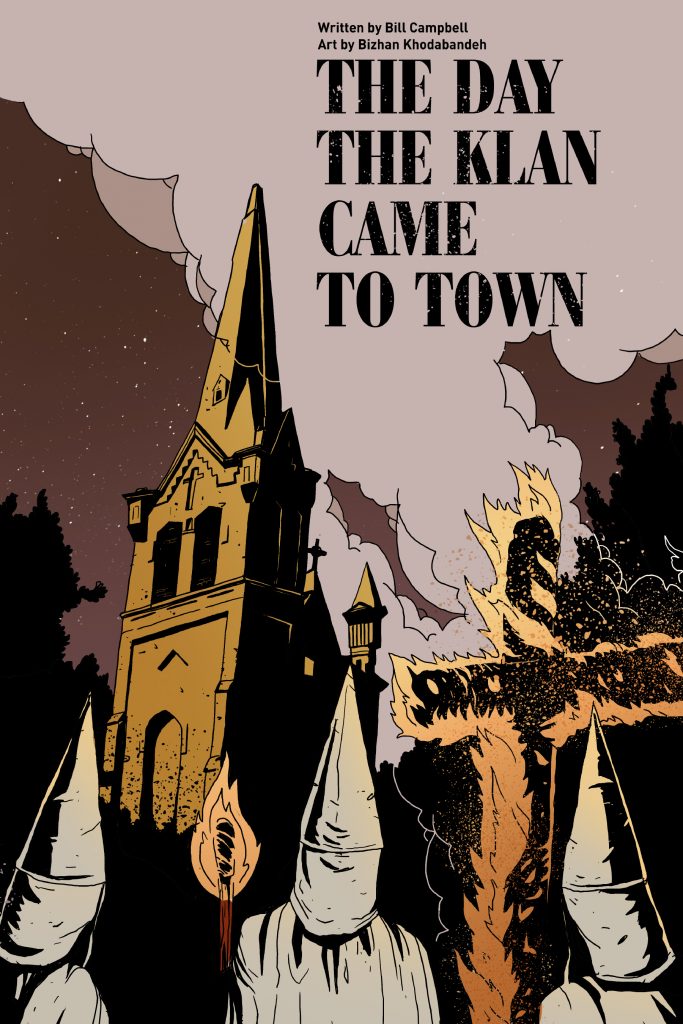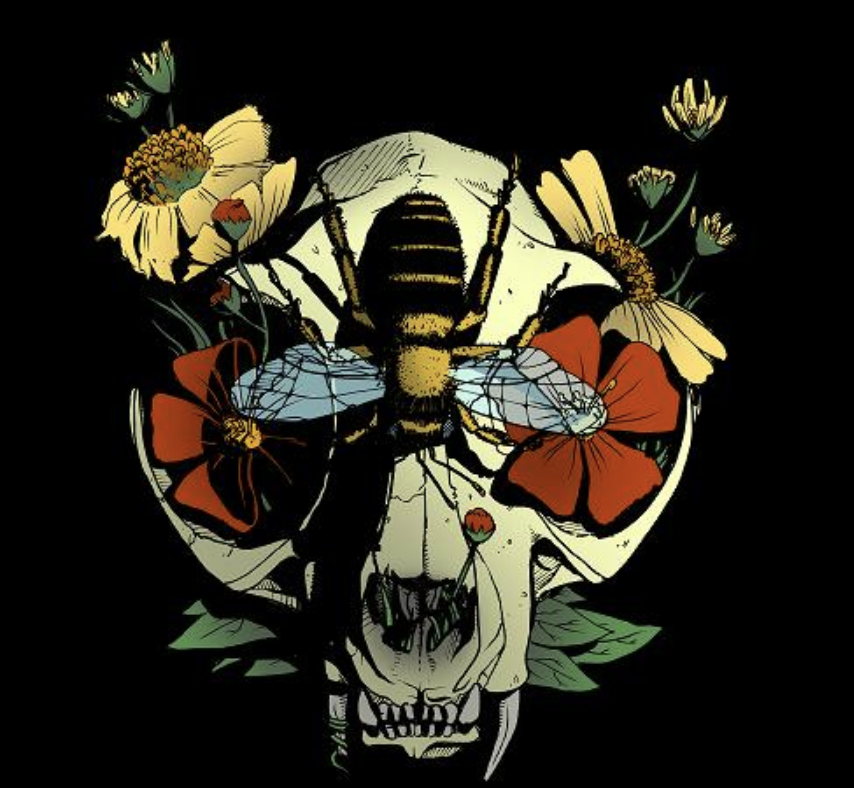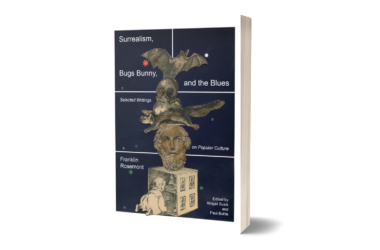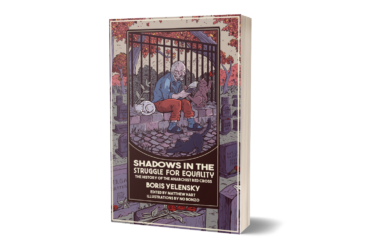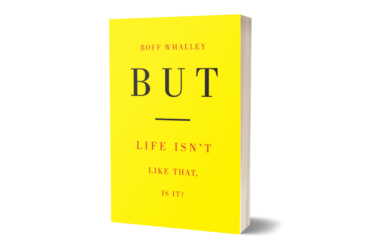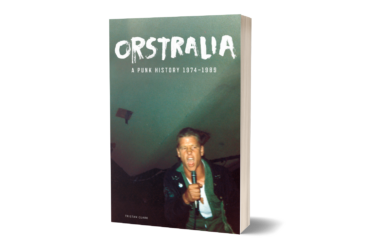By Marilyn Drew Necci
RVA Magazine
December 23rd, 2013
“I know it might come across as cliche, but I find inspiration in everything. Good artists excel most when they recognize patterns that are social, philosophical, physical, historical, political etc. An artist’s ability to utilize these patterns to provide delight or insight can be quite powerful when it’s done well. Manipulating the built environment’s patterns and symbols is the best way to present one’s own vision of the world.” This is Bizhan Khodabandeh’s explanation of what inspires his art. His keen sense of observation, however, expands beyond simply recognizing patterns. Bizhan has the rare gift of being able to interpret events and social patterns in a way that makes them accessible and significant. You can see this in his recent book The Little Black Fish, in which Bizhan re-imagines a common Iranian tale; translating it for an American audience and increasing its accessibility. Over the years, he has chosen to focus his interpretive lens on activism, with the very real goal of affecting change in his community.
“I know it might come across as cliche, but I find inspiration in everything. Good artists excel most when they recognize patterns that are social, philosophical, physical, historical, political etc. An artist’s ability to utilize these patterns to provide delight or insight can be quite powerful when it’s done well. Manipulating the built environment’s patterns and symbols is the best way to present one’s own vision of the world.” This is Bizhan Khodabandeh’s explanation of what inspires his art. His keen sense of observation, however, expands beyond simply recognizing patterns. Bizhan has the rare gift of being able to interpret events and social patterns in a way that makes them accessible and significant. You can see this in his recent book The Little Black Fish, in which Bizhan re-imagines a common Iranian tale; translating it for an American audience and increasing its accessibility. Over the years, he has chosen to focus his interpretive lens on activism, with the very real goal of affecting change in his community.
Bizhan “started out doing pro-bono design work for non-profits, student groups and musicians while in undergrad.” During his first year in college, both the Afghanistan and Iraq wars raged overseas. Bizhan became more and more interested in the wars, and in America’s political activities at the time, and his art began to change. Since then, he has done design work for Food Not Bombs, Free Palestine Now, The VCU Living Wage Campaign, and Critical Mass. “A lot of my motivation for working with non-profits was a direct result of seeing images of war broadcast through Al Jazeera,” he explains. “The images censored by American media showed children mutilated by the bombings. Those images struck a deep chord in me.”

This resonance converted itself into an activist fervor. But, Bizhan says, he soon “realized while debating people about the wars that I was very ignorant about several subjects.” As a result, he began spending much of his free time studying sociopolitical theory and history. “My continued self-education in these subjects greatly influences my work.”
During these fledgling activist years, Bizhan had what would become a life-altering experience. He enrolled in a class at VCU called “Design Rebels,” taught by Noah Scalin. It was here that Bizhan began to fully develop into an artist that made social consciousness part of his practice. “I finally met someone who made ethics part of their design practice–something that had seemed out of reach in a profession where you are the face of corporations involved in unethical practices.” In later years, Bizhan would go on to co-teach this class with Scalin.
During this time, Bizhan painted a lot of murals and did live paintings, primarily because of his involvement with Richmond’s graffiti scene. His work from this period “looked like modernist or Swiss design,” he says. “It was very grid-like, clean, and easy to understand.” His graffiti work led to a relationship with a local rapper, and together, they produced a hip hop zine. While working on this zine, and painting, Bizhan managed to finish college and began couch-surfing, working as a freelance artist.
Concerned that he’d become the proverbial guy on the couch who spends years with no ambition and no fixed address, Bizhan got to work. He set up a screen printing lab and began learning how to make prints. Soon he was printing t-shirts for bands and applying to grad schools. His couch-host, Curtis Grimstead, eventually started Rorschach Records and utilized several of Bizhan’s prints and designs for the label’s releases.
At some point before he’d completed the grad school application process, Bizhan was peer-pressured into participating in a graffiti exhibit at Richmond’s Gallery 5. At the exhibit, he met the gallery’s founder, Amanda Robinson, whom he later married. Together they began curating numerous socially-conscious exhibitions. Amanda also enlisted Bizhan to do design work for the gallery. “With the help of my friend Kenneth Yates, I curated several socially-conscious exhibits, organized politically focused film showings, and held workshops on guerrilla media techniques,” says Bizhan of his time at the gallery.

After a fruitful and productive time with Gallery 5, Bizhan enrolled in grad school at VCU. He explains his course of study this way: “I researched decentralized social forums to come up with ways to elevate people whom I felt were censored due to their socioeconomic status.” He explains that this research led to two huge projects. “One of these projects was my I Dream of a Richmond… campaign that received a lot of local as well as international recognition.” The campaign featured posters, combined with a Richmonder’s statement about the city, and were displayed in numerous locations. These posters amplified the voices of citizens not traditionally heard in wider arenas, and expressed ideas about the city that might not have been what people always expected to hear.
Bizhan’s other project during this era, There Once Was A Rebellion, attempted to provide information about cheap and easily accessible media creation techniques to groups not traditionally given a voice in the media. While both projects were successful, Bizhan says, “The public was far more responsive to my I Dream of A Richmond campaign–which dealt with the same issues, but not in as decentralized of a means as I would have liked.” When asked what he meant by decentralization, Bizhan explained, “Decentralization is the act of dispersing power from an individual (or small group) to multiple individuals. With media power, centralization is predominately a product of socio-economic status. As things stand now, the most economically powerful also are the most vocally prominent. Some of the projects I’ve worked on dealt with experimenting on evening things out locally a little bit.”
After finishing grad school, Bizhan began teaching at the Appamattox Regional Governor’s School. He taught there for five years before accepting a position at the Department of Communication Arts at VCU. The governor’s school was never able to hire him full-time, which Bizhan finds disappointing. “Those kids were amazing. I really miss teaching there.”
As he developed artistically and professionally, Bizhan’s work shifted almost entirely to comic writing. “My first comic was an adaptation of The Little Black Fish,” he explains. “The story was related to my interest in sociopolitical theory. It was originally written by the teacher and activist Samad Behrangi. He was involved with a group that aided in the fall of the Shah of Iran in 1979. The story is about determination in seeking truth, self-sacrifice, and questioning authority.” Bizhan explained his shift into comics this way: “I moved into comics as a direct result of trying to marry my interests in history, activism, and comics. Doing an adaptation of The Little Black Fish was a great start, which lead to Richmond Monuments, thanks to arm-twisting by my father-in-law.” Richmond Monuments, an ongoing webcomic, is described as “anthropomorphizing Richmond, VA monuments as if they were objective observers of the populace.” Rather than commenting on the historical figures these monuments represent, the strip finds humor through the monuments’ observations–and expressions–of humanity.
While he is currently co-curating a traveling typographic poster exhibition, comics remain the art form he’s most invested in. Bizhan spends most of his time working on two different comic projects. Indoor/Outdoor, a parallel narrative about two cats that explores Bizhan’s interest in “the formal qualities of comics,” is “about the adventures that an escaped indoor cat and an outdoor cat have.” The Little Red Fish is a “political allegory… loosely paralleling the Iranian Revolution of ’79, starting with the staged coup of Mossadegh.” Due to its relation to Bizhan’s Iranian heritage, The Little Red Fish, like Bizhan’s last published comic, The Little Black Fish, is definitely the project closest to his heart. His drive for active resistance through art shines through in his commitment to The Little Red Fish and other similar projects.

Bizhan’s illustrations are quickly becoming a staple within the Richmond comic community. His work spans a wide range of subject matter, and between his own concepts and his commissioned pieces, it is clear that Bizhan is one of Richmond’s foremost up-and-coming artists. Simply put, Bizhan is a good dude with a creative vision, and the talent and energy to see it through.
Back to Bizhan Khodabandeh’s Author Page
